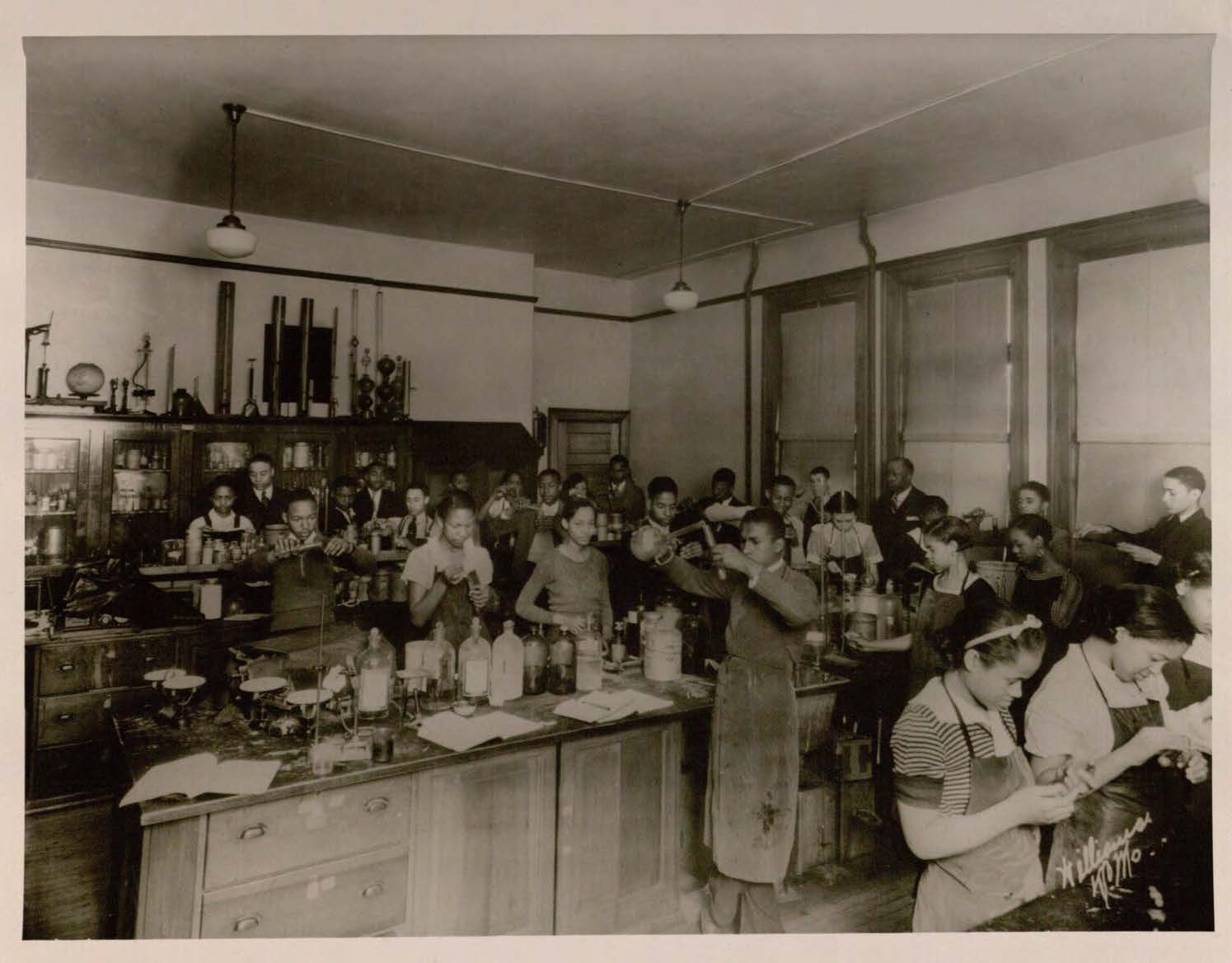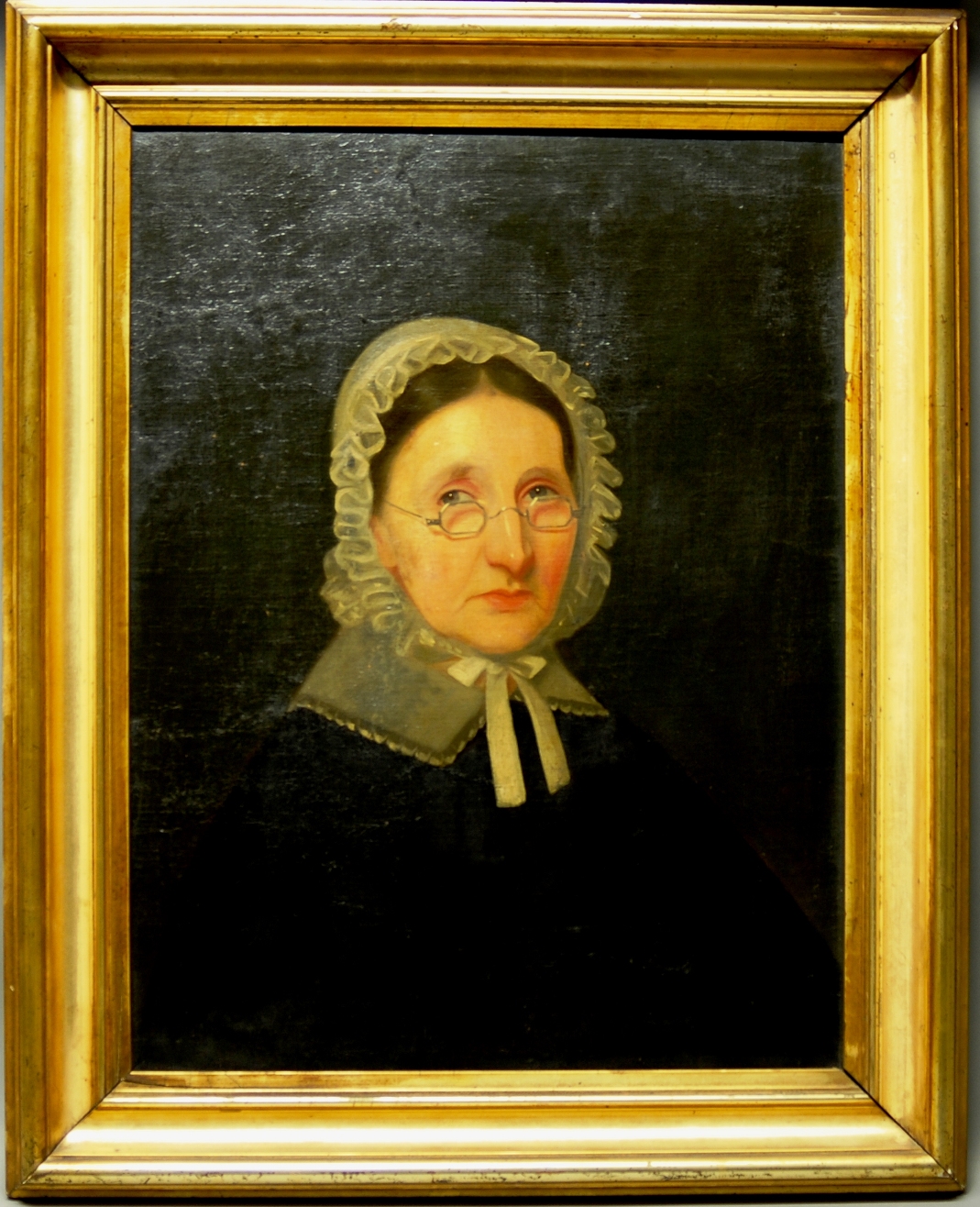February 27th, 2017 Spencer Research Library’s current exhibition, “Education: The Mightiest Weapon,” highlights African American school experiences in the state of Kansas, focusing primarily on the period before 1955. In the coming days we’ll feature a longer post on the exhibition, but today we share an image and a label to whet your appetite. “Education: The Mightiest Weapon” is on display in Spencer Library’s gallery space through May 18th, 2017.
Sumner High School, Kansas City, KS
Sumner is a child not of our own volition but rather an offspring of the race antipathy of a bygone period. It was a veritable blessing in disguise—a flower of which we may proudly say, “The bud had a bitter taste, but sweet indeed is the flower”

Chemistry Classroom, 1930s, Sumner High School. Sumner High School Collection. Call #: RH MS-P 1137.
Click image to enlarge.
In 1905, the Kansas State Legislature passed a law exempting Kansas City, Kansas from the state law prohibiting racially segregated public high schools. Reluctantly, the Governor of Kansas E. W. Hoch signed the bill, but persuaded the majority of Kansas City, Kansas voters to construct a new high school building for African Americans at no less than $40,000 and to be as well-equipped as the existing Kansas City, Kansas High School. Determined to overcome the inequities of racial segregation, the teachers, students and community members of Sumner High School strove to develop a tradition of academic excellence. They countered the local school board’s proposals for an emphasis on manual training courses by implementing a curriculum that emphasized college preparatory classes at Sumner. By 1914, Sumner was a member of the prestigious North Central Association of Secondary Schools. Until the 1970s, the majority of African American students attending the University of Kansas were graduates of Sumner High School.
Sumner closed in 1978 under a federally mandated plan for racial integration of schools in Kansas City, Kansas.
Deborah Dandridge
Field Archivist and Curator, African American Experience Collections
Tags: African Americans, Africann American Experience Collections, Chemistry, classrooms, Deborah Dandridge, Education, Kansas Schools, Sumner High School
Posted in Exhibitions, Kansas Collection |
No Comments Yet »
January 31st, 2013 When the Spencer Research Library receives a collection of personal papers it can sometimes include materials that aren’t papers at all. Further, the creator of the papers may just be the most famous of a whole constellation of friends and family members whose stories are also revealed in those papers.
This first came to my attention, as an assistant in the Processing Department, with the personal papers of E. H. S. Bailey (call number: PP 158). Edgar Henry Summerfield Bailey arrived at the University of Kansas in the fall of 1883, where he taught chemistry for the next fifty years until his death in 1933. In addition to teaching he also authored the lyrics for the famous KU “Rock Chalk” chant and pioneered the detection and exposure of fraudulent practices on the part of food manufacturers in the early 20th century.
Late in his life, he took a great interest in genealogy, and his papers include much about his relatives in 19th century Connecticut. Among them, his maternal grandmother, Charity Birdsey Miller, is vividly represented by a surviving portrait in oil (artist unknown) that also arrived with the Bailey papers. A stern, sensible-looking woman, she is portrayed wearing eye glasses. Those spectacles are included with Bailey’s papers in the University Archives, as is the original case in which they were sold by a jeweler and optician in Meriden, Connecticut.


Top: Portrait of Charity Birdsey Miller. Personal Papers of E. H. S. Bailey. Call Number: PP 158, Oversize Folder 8. Bottom: Charity Birdsey Miller’s eye glasses and eye glasses case. Personal Papers of E. H. S. Bailey. Call Number: PP 158, Box 4, Folder 140. Click images to enlarge.
For further insight into the life of this woman, the collection includes her Last Will and Testament, as well as probate documents inventorying her possessions and their distribution among her three grown daughters.
Thus, a collection which might have been expected to address only the life of a Midwestern academic in the early 20th century can also be of great value in illuminating the life of a virtuous woman of modest property in early- and mid-19th century New England.
Larry M. Brow
Program Assistant, Spencer Research Library Processing Department
Tags: Charity Birdsey Miller, Chemistry, Connecticut, E. H. S. Bailey, eye glasses, Larry M. Brow, oil portrait, Personal Papers, portrait, Processing, spectacles, University Archives, University of Kansas
Posted in Processing, University Archives |
No Comments Yet »



